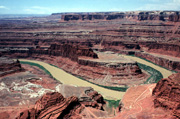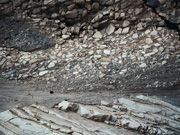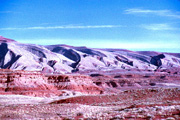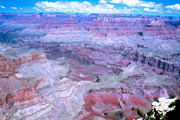Exercise 8B
Using the Principles of Relative Dating
The links below will take you to animations illustrating the principles of relative dating and to photographs of real examples on which to try out the principles. Examine the photographs and movies below, recording your observations and answers in the appropriate spaces on Worksheet 8B in your lab manual. Then, complete Assessment 8B on Canvas.
Click on each of the five links below to bring up an animation about the seas moving in and out. Each sequence plays twice, once showing the water moving in and out, and a second time with half the water removed to show what is on the sea bottom.
Deposition of a layer of sand as the sea moves in.
This shows how a beach sand can cover a huge area.
Deposition of layers of sand and mud as the sea moves in.
This shows how different types of sediment can be deposited at the same time and how one type can be
deposited over another type.
Deposition of layers of sand, mud, and limestone as the sea moves in.
Deposition of layers of sand and mud as the sea moves out.
Deposition of a layer of sand as the sea moves out and is followed by sand dunes.
Click on each of the thumbnail images below to see a photograph illustrating principles of relative dating.

|
Canyonlands - Youngest layer is on top, oldest on the bottom. |
 |
Hance Rapids, Grand Canyon - Younger features crosscut older rocks. |
 |
Death Valley - Younger rock units can contain pieces of older rocks. |
 |
Raplee Monocline, Utah - Rocks generally are deposited in nearly horizontal layers. If the layers are no longer so, then they must have been effected by some event, such as folding or tilting. |
 |
Eastern Grand Canyon - An angular unconformity is where older rocks were tilted, eroded, and overlain by younger rock layers. |




